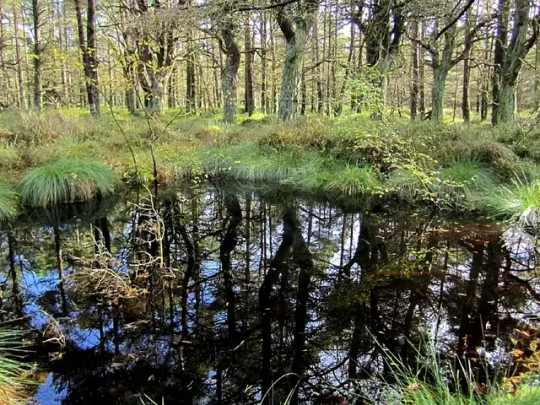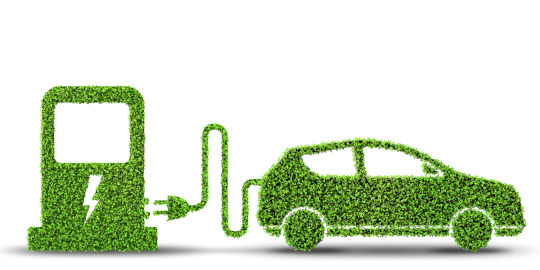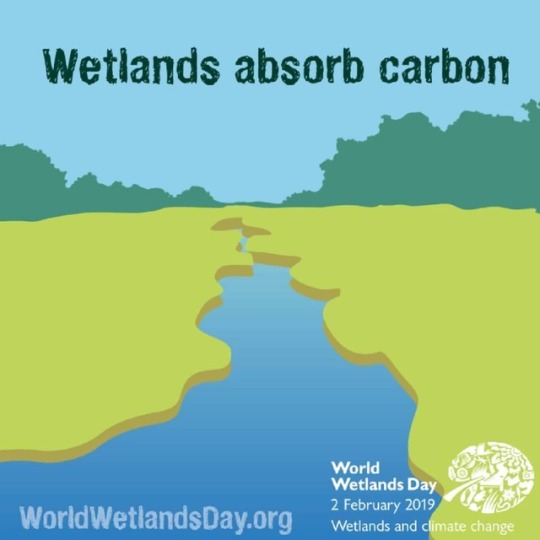#carbonstorage
Explore tagged Tumblr posts
Text
#CarbonCapture#CCUS#CarbonUtilization#CarbonStorage#EmissionsReduction#NetZero#CleanEnergySolutions#ClimateTech#Decarbonization#CarbonNeutrality#SustainableTech#GreenInnovation#CarbonManagement
0 notes
Text
Carbon Capture and Storage (CCS) Market
𝐂𝐚𝐫𝐛𝐨𝐧 𝐂𝐚𝐩𝐭𝐮𝐫𝐞 & 𝐒𝐭𝐨𝐫𝐚𝐠𝐞: 𝐓𝐡𝐞 𝐆𝐚𝐦𝐞-𝐂𝐡𝐚𝐧𝐠𝐢𝐧𝐠 𝐓𝐞𝐜𝐡 𝐟𝐨𝐫 𝐚 𝐆𝐫𝐞𝐞𝐧𝐞𝐫 𝐅𝐮𝐭𝐮𝐫𝐞 — IndustryARC™
Carbon Capture & Storage (CCS) Market Size is forecast to reach $ 80,000 Million by 2030, at a CAGR of 30% during forecast period 2024–2030.
𝐃𝐨𝐰𝐧𝐥𝐨𝐚𝐝 𝗗𝗲𝘁𝗮𝗶𝗹𝗲𝗱 𝐏𝐃𝐅 𝐇𝐞𝐫𝐞
Carbon Capturing and Storage (CCS) technology is a groundbreaking solution in the fight against climate change, designed to capture carbon dioxide emissions from industrial sources and securely store them underground. By preventing CO2 from entering the atmosphere, CCS plays a vital role in reducing the carbon footprint of power plants, factories, and other high-emission industries. This technology has the potential to significantly mitigate the impact of greenhouse gases and contribute to global efforts aimed at achieving carbon neutrality.
🔗 𝑭𝒐𝒓 𝑴𝒐𝒓𝒆 𝑰𝒏𝒇𝒐𝒓𝒎𝒂𝒕𝒊𝒐𝒏
As governments and industries around the world look for ways to meet environmental targets, the demand for CCS technology is on the rise. Innovations in carbon capture efficiency and storage capabilities are driving widespread adoption across sectors, positioning CCS as a key component in the global strategy to combat climate change.
By Now
✅ 𝗞𝗲𝘆 𝗖𝗼𝗺𝗽𝗮𝗻𝗶𝗲𝘀 — Shell | Aker Solutions | Equinor | Dakota Gasification Company | Linde | Siemens Energy | Fluor Corporation | Sulzer | Mitsubishi Heavy Industries | Dow | LyondellBasell | Sherwin-Williams | PPG | INEOS
#CarbonCapture#CCSTechnology#CarbonStorage#ClimateAction#Sustainability#GreenTech#CarbonNeutrality#CO2Emissions#EnvironmentalInnovation#CleanEnergy#SustainableFuture#CarbonReduction#ClimateSolutions
0 notes
Text
Carbon Capture and Storage: A Key to Achieve Net-Zero Targets
Amidst rising CO2 emissions, renewable energy sources and improving energy efficiency are critical components of climate change solutions. One of the most promising technologies to mitigate industrial carbon emissions is Carbon Capture and Storage (CCS). This innovative technology provides a pathway to capture CO2 emissions before they enter the atmosphere, significantly reducing their impact on the environment. According to the International Energy Agency’s (IEA) Sustainable Development Scenario, Carbon Capture, Utilization, and Storage (CCUS) technology could account for nearly 15% of the total emissions reduction needed to achieve global net-zero targets by 2070. This highlights CCUS as a key component in addressing climate change and meeting long-term sustainability goals.
Carbon Capture and Storage (CCS) is no longer a far-off vision of the future but a practical solution to today’s climate crisis. CCS is also recognized as an essential tool to meet the Paris Agreement’s target of limiting global temperature rise to below 2°C. According to the Global CCS Institute, to meet these goals, the world would need to increase CCS capacity from the current 40 million tons annually to around 5.6 billion tons per year by 2050.

What is Carbon Capture and Storage?
Carbon Capture and Storage (CCS) is a carbon emissions reduction technology designed to capture and securely store CO2 produced by industries. It is utilized in industries like steel, cement, and power generation, where emissions are difficult to decarbonize. The CCS process can be broken down as follows:
Capture: CO2 is separated from other gases in industrial processes using advanced carbon capture technology.
Transport: Captured CO2 is then transported via pipelines, ships, or other means to a designated storage site.
Storage: CO2 is stored deep underground in geological formations, such as depleted oil and gas reservoirs or saline aquifers, preventing its release into the atmosphere.
The Technologies behind Carbon Capture and Storage
The most common CO2 storage methods involve geological formations. These include depleted oil and gas reservoirs, saline aquifers, and unmineable coal seams. A successful example of geological CO2 storage is Norway’s Sleipner project, which has been storing approximately 1 million tons of CO2 annually in a saline aquifer beneath the North Sea since 1996. Other carbon capture methods are generally classified into three primary approaches:
Pre-Combustion Carbon Capture: This method captures CO2 before the fuel is burned, making it particularly suitable for industries that convert coal, oil, or gas into fuel gas. Pre-combustion capture typically involves gasifying the fuel to produce a mixture of hydrogen and CO2. The CO2 is then separated and captured for storage.
Post-Combustion Carbon Capture: The method involves capturing CO2 from the flue gases emitted after fossil fuels are burned. This approach is widely applicable to power plants and various industrial facilities. A notable example is the Boundary Dam power station in Canada, which captures approximately 1 million tons of CO2 annually through post-combustion capture.
Oxyfuel Combustion Technology: This process involves burning fuels in oxygen rather than air, resulting in a concentrated stream of CO2, which makes it easier to capture. This method is still being developed and tested but holds promise for future CCS projects.
Once captured, CO2 must be transported to storage sites. Pipelines are the most common mode of CO2 transportation, particularly for large-scale carbon capture and storage systems. Currently, more than 6,500 kilometers of CO2 pipelines are in operation globally, especially in regions like the US and Canada, which have well-established infrastructure for CCS and carbon capture utilization and storage (CCUS).
Real-World Applications of Carbon Capture and Storage
Around the world, CCS projects are already in action as power generation is a major source of CO2 emissions. Implementing CCS in power plants has proven effective in reducing their environmental impact. For instance, the Petra Nova power station in Texas employed a CCS system that captured over 1.6 million tons of CO2 annually during its operation from 2017 to 2020.
The Gorgon Project in Australia is one of the largest CCS initiatives in the world, aiming to store 4 million tons of CO2 annually in an offshore gas field. Such large-scale projects demonstrate the feasibility of CCS in combating industrial emissions.
Similarly, the Drax Group in the UK, which operates the country’s largest power station, plans to capture 8 million tons of CO2 annually as part of its bioenergy with carbon capture and storage (BECCS) project. In January 2024, the UK government approved Drax’s plan to convert two of its biomass units into carbon capture and storage stations for bioenergy.
Challenges and Opportunities in Carbon Capture and Storage
While the potential of Carbon Capture and Storage (CCS) is promising, several challenges remain. The cost of implementing CCS technology remains high. Estimates suggest that capturing CO2 can cost between $60 to $100 per ton, depending on the technology and source. The IEA forecasts that the cost of carbon capture and storage (CCS) could decrease significantly in the coming years, primarily due to increased deployment and technological advancements. In addition to the costs, developing the infrastructure required for CCS, such as pipelines and storage facilities, demands substantial investment. Countries without established pipelines or suitable geological storage sites face logistical challenges. Most importantly, public concern about the safety of storing CO2 underground and a lack of clear government policies have slowed the widespread adoption of CCS.
However, despite these financial and regulatory hurdles, varied opportunities are paving the way for stakeholders to explore the full potential of CCS. Active R&D efforts are leading to more efficient and cost-effective CCS technologies. Innovations in materials for CO2 capture, such as advanced solvents and membranes, are expected to further drive down costs. Governments are increasingly recognizing the role of CCS in meeting climate goals. For instance, the US Infrastructure Investment and Jobs Act passed in 2021 allocated $3.5 billion for CCS projects, and similar investments are being made worldwide.
Future Prospects in Carbon Capture and Storage
Looking ahead, CCS will play a pivotal role in managing CO2 and keeping our planet’s climate in balance. As we strive toward a net-zero future, industries and governments are expected to invest heavily in CCS infrastructure. Countries like China and India, with their heavy reliance on coal, could be key players in adopting CCS to reduce their emissions while maintaining economic growth. From power generation to heavy industry, CCS is proving its ability to significantly curb CO2 emissions. However, realizing its full potential will require overcoming economic and infrastructural challenges, supported by continued innovation, government policy, and investment.
#carboncapture#carbonstorage#netzerocarbon#carbonemissions#renewableenergy#bioenergy#ccstechnology#marketresearch#tritonmarketresearch
0 notes
Text

Carbon Capture, Utilization, and Storage Market worth $12.9 billion in 2030
The report "Carbon Capture, Utilization, and Storage Market by Service (Capture, Transportation, Utilization, Storage), Technology (Chemical Looping, Solvents & Sorbent, Membranes), End-Use Industry, and Region - Global Forecast to 2030", for carbon capture, utilization, and storage is expected to grow at an average CAGR of 24.0%, from USD 3.1 billion in 2023 to USD 12.9 billion in 2030. In order to minimize carbon emissions into the atmosphere, carbon capture, utilization, and storage techniques are primarily used in the oil and gas, power generation, and chemical and petrochemical sectors. Many countries all across the world have proposed deploying this technology to reduce carbon emissions and handle climate change. The market for carbon capture, utilization, and storage is being driven by government initiatives aimed at achieving net zero emissions.
Download pdf-https://www.marketsandmarkets.com/pdfdownloadNew.asp?id=151234843
Capture service segment comprise a major share of the carbon capture, utilization, and storage market, in terms of value and volume.
The first phase in the CCUS process is carbon capture, and it involves separating and extracting carbon from the effluent flue gas stream that originates from a variety of industrial sources, including power plants, petrochemical and chemical companies, iron and steel smelters, and others. Several methods are proposed to remove carbon from the flue gas effluent stream, including Direct Air Capture (DAC), Oxy-Fuel, Pre- and Post-Combustion, and Bio-Energy CCS (BECCS). Several companies use these technology all around the world to reduce their carbon footprint. Adoption of this technique appears to be more expensive since direct air capture significantly deviates from standard practices and removes carbon directly from the atmosphere rather than from industrial sources.
Chemical looping technology type to be the second dominating segment in the global carbon capture, utilization, and storage market in terms of value and volume
Chemical looping is a technique used in industries to trap CO2 during the thermal fuel conversion process. In order to create the nitrogen-free flue gas stream, which mostly consists of CO2, H2O, and reduced oxy-carbonates, a sequence of chemical processes are carried out. This extremely low chemical combination flue gas stream is subsequently sent to another operation, where carbon is removed from the residual effluent stream. This method is mostly utilized in the chemical and petrochemical, as well as oil and gas sectors, where the effluent stream's nitrogen content is considerably higher.
Oil & gas industry is the dominating end-use industry in the global carbon Capture, Utilization, and Storage market in terms of value
The carbon capture, utilization, and storage market is dominated by the oil and gas sector. This can be attributed to the industry's high initial adoption rate, which is expected to continue during the forecast period, due to the fact it is one of the main sources of atmospheric carbon emissions. The CCUS technology is being used in a number of ongoing projects, including the Century Plant in the United States, the Shute Creek Gas Processing Plant in the United States, the Uthmaniyah Gas Plant in Saudi Arabia, and the Petrobras Santos Basin Plant in Brazil, to lower carbon emissions in their respective locations.
Sample Request- https://www.marketsandmarkets.com/requestsampleNew.asp?id=151234843
Asia Pacific to be the fastest-growing region in the carbon Capture, Utilization, and Storage market during the forecast period
The CCUS market is expected to grow at the fastest pace in Asia Pacific. this is mostly because of the significant improvements in technological development that Australia and China have achieved. Businesses were initially hesitant to implement CCUS as it is a capital-intensive task. However, with recent developments in environmental policies and regulations, as well as the ability to combine CCUS with hydrogen generation, companies are now actively involved in the technology's development. Governments around the Asia-Pacific region constantly encouraging their industrial sector to actively engage in the joint endeavor to reduce climate change through the establishment of tax credit programs.
Some of the key players in the global carbon capture, utilization, and storage market are such as Royal Dutch Shell (Netherlands), Fluor Corporation (US), Mitsubishi Heavy Industries, Ltd. (Japan), Exxon Mobil Corporation (US), and Linde Plc (UK), JGC Holdings (Japan), Schlumberger Ltd (US), Aker Solutions (Norway), Honeywell International (US), Equinor ASA (Norway).
#CarbonCapture#CCUS#CarbonStorage#CarbonUtilization#CleanEnergy#ClimateAction#Sustainability#NetZero#CarbonReduction#GreenTech#ClimateChange#RenewableEnergy#CarbonSequestration#Decarbonization#EnergyTransition
0 notes
Text
New Government Actions to Reduce Peat Carbon Emissions and Support Farmers

In a bid to combat climate change and support sustainable farming practices, the government has unveiled new measures aimed at improving lowland peat and reducing carbon emissions. These actions come following recommendations from Robert Caudwell, the independent Chair of the Lowland Agricultural Peat Task Force, whose report was published today.
Preserving Peat Soils for a Sustainable Future
Peat soils are crucial in the fight against climate change as they store over half of the country's terrestrial carbon. However, centuries of drainage for agriculture have led to the drying out of peat soils, causing the release of carbon into the atmosphere. Currently, only 1% of England's lowland peatlands remain in a near-natural state. By rewetting lowland peat soils, multiple benefits can be achieved, including reduced carbon emissions, improved food security, enhanced wetland biodiversity, and better protection against flooding.
Government Announces Comprehensive Action
To support the preservation and sustainable management of lowland peatlands, the government has committed to implementing all of Robert Caudwell's recommendations. Trudy Harrison, the Environment Minister, emphasized the significance of peatlands in the battle against climate change, stating that they house over half of the country's terrestrial carbon stores and provide resilience for future farming. The government's new measures include providing funding for innovative water management schemes. Over £7.5 million will be allocated to drive advancements in understanding the water challenges associated with lowland peat, transforming the way water is utilized in these regions. The funding will also support the installation of infrastructure and monitoring technology, enabling better control of water levels. These initiatives aim to improve resilience to drought and safeguard farming on valuable agricultural land. By adopting sustainable peatland management practices, the government aims to support the rural economy and the livelihoods of those dependent on the land.
Recommendations for Sustainable Peatland Management
The Lowland Agricultural Peat Task Force, established in 2020, explored ways to improve the condition of England's lowland farmed peat while ensuring the continuation of productive agriculture. The Chair of the task force, Robert Caudwell, presented fourteen recommendations to the government and the wider sector for more sustainable peatland management. Some of the key recommendations include: - Investing in water storage, management, and control - Allocating public funds for wetter farming practices on peat soils - Providing technical advice on maintaining wetter peat soils - Creating viable opportunities in private finance - Raising awareness of lowland agricultural peat soils - Implementing the task force's roadmap for commercially viable paludiculture (farming on rewetted peat) Robert Caudwell expressed gratitude to the task force members for their dedication to finding sustainable ways to manage lowland agricultural peat. He emphasized the importance of reducing carbon emissions from lowland peat in the government's climate change plan. Funding Allocations The new funding will be distributed across two pilots. The Lowland Agricultural Peat Small Infrastructure Pilot, receiving £5.45 million, will facilitate the installation of infrastructure and monitoring technology for better control of water levels in lowland peat areas. The project is being supported by the Association of Drainage Authorities. The Lowland Agricultural Peat Water Discovery Pilot, funded with £2.2 million, will be delivered by the Environment Agency. This initiative aims to enable local and water peatland partnerships to develop costed water level management plans for lowland peat areas in England. Alan Lovell, Chair of the Environment Agency, welcomedthe publication of the Caudwell report and acknowledged the crucial role of sustainable water management in protecting the carbon stored in peat soils. The report's findings, combined with further research and development, will provide support and incentives for farmers transitioning to more climate-friendly peat soil farming practices.
Supporting Paludiculture and Overcoming Barriers
In addition to the funding for water management projects, the government has announced the winners of the £5 million Paludiculture Exploration Fund grant scheme. This scheme, administered by Natural England, aims to address barriers to developing paludiculture as a commercially viable farming practice on lowland peat soils. Twelve projects across England will receive support, focusing on understanding and overcoming obstacles to farming on wet peat soils. Tony Juniper, Chair of Natural England, highlighted the importance of finding ways to support livelihoods and meet societal needs while halting peat soil degradation. The Paludiculture Exploration Fund will contribute to revitalizing peatlands and promoting profitable and sustainable rural businesses through wetland agriculture.
Government Commitment to Climate Change and Nature-Based Solutions
Today's announcements align with the government's commitment to driving international ambition in climate change action and pursuing nature-based solutions. The projects and initiatives demonstrate the government's determination to achieve its net zero pathway and deliver on its lowland peat commitments within various plans, including the England Peat Action Plan, Net Zero Strategy, Environmental Improvement Plan, and Plan for Water. The evidence generated by these projects will inform Defra's efforts in lowland peat management and contribute to the development of the new England Peat Map, to be published next year. Furthermore, Defra has already funded the update of the Peatland Code, launched a £6.6 million peatland research and development program, and is working on new farming schemes to support rewetting, restoration, and innovative farming methods in lowland regions. Collaboration for Sustainable Peatland Management Recognizing the environmental benefits and the crucial role of lowland peat soils in food production, the government will continue to collaborate with Robert Caudwell, farmers, landowners, and the wider industry to implement the recommendations for sustainable peatland management. Key facts: The Lowland Agricultural Peat Task Force, chaired by Robert Caudwell, was formed to improve the condition of England's farmed lowland peat. The task force comprised national and regional sub-groups, bringing together experts and stakeholders in the field. The projects mentioned in the press release include the Lowland Agricultural Peat Water Discovery Pilot and the Lowland Agricultural Peat Small Infrastructure Pilot, which will receive funding to facilitate water management and infrastructure installation. Defra and the Environment Agency are also planning to support a research and development program focusing on rewetting peat and investigating aspects such as water demand, supply, storage, flood risk management, water quality, biodiversity, and regulation.
About Robert Caudwell
Robert Caudwell chaired the Lowland Agricultural Peat Task Force, which operated from 2021 to 2022. The task force included representatives from various organizations and experts in paludiculture. Sources: THX News, Department for Environment - Food and Rural Affairs, Environment Agency, Natural England, & Trudy Harrison MP. Read the full article
#Agriculturalpeatsoils#Carbonstorage#Climatechangemitigation#Lowlandpeatsoils#Paludicultureexploration#Peatcarbonemissions#Peatlandbiodiversity#Sustainablefarmingpractices#Sustainablepeatlandmanagement#Watermanagementprojects
0 notes
Text

Soil carbon content refers to the amount of carbon stored in soil, primarily in the form of organic matter and inorganic carbon compounds. It plays a crucial role in soil fertility, water retention, and overall ecosystem health. Organic carbon, derived from decomposed plant and microbial matter, enhances soil structure and nutrient availability, while inorganic carbon, mainly from carbonate minerals, contributes to long-term carbon storage. Soil carbon dynamics are influenced by land use, climate, and management practices, making it a key factor in carbon sequestration and climate change mitigation.
#SoilCarbon #CarbonSequestration #SoilHealth #ClimateChange #CarbonStorage #RegenerativeAgriculture #SoilOrganicMatter #SustainableFarming #SoilFertility #CarbonCycle #EcosystemServices #SoilScience #Agriculture #ClimateMitigation #CarbonSink
Visit : https://soilscientists.org/
Nomination Link: https://soilscientists.org/award-nomination/?ecategory=Awards&rcategory=Awardee
Registration Link: https://soilscientists.org/award-registration/
For Enquiries: [email protected]
Get Connected Here
--------------------------
--------------------------
youtube.com/@soilscientists22/shorts
www.instagram.com/soil_scientistsawards/
www.facebook.com/profile.php?id=61567537160419
in.pinterest.com/soilscientists/
www.linkedin.com/in/soilscientists-scientist-69a703332
x.com/soilscientist22
0 notes
Text
"Climate Control: Trends and Forecast for the Carbon Capture and Storage Market (2024-2033)"
Carbon Capture and Storage (CCS) is rapidly becoming a pivotal technology in the fight against climate change, offering a promising solution for reducing greenhouse gas emissions from industrial processes and power generation. By capturing carbon dioxide (CO2) at its source—whether from power plants, factories, or other major emitters—CCS technology prevents this potent greenhouse gas from entering the atmosphere. The captured CO2 is then transported and securely stored underground in geological formations, where it can be contained for centuries. Advances in CCS technology are enhancing its efficiency and scalability, making it a key player in achieving global climate goals. With increasing investments and research, CCS is poised to become an integral part of a comprehensive strategy to mitigate climate change, support sustainable energy transitions, and drive economic growth in green technologies. Embrace the future of climate action with CCS and join the movement toward a cleaner, more sustainable planet.
#CarbonCapture #CarbonStorage #ClimateAction #GreenTech #SustainableEnergy #ClimateChangeSolutions #CCSTechnology #EmissionReduction #CleanEnergy #GreenhouseGas #ClimateGoals #EnergyTransition #EnvironmentalInnovation #SustainableFuture #CarbonSequestration #ClimateMitigation #EcoTech #CarbonNeutral #GreenIndustry #FutureOfClimate
0 notes
Text
Carbon Capture and Storage Market 2024-2033: Securing Carbon Neutrality
Carbon Capture and Storage (CCS) technology is at the forefront of the fight against climate change, offering a transformative solution to reduce greenhouse gas emissions and mitigate global warming.
CCS involves capturing carbon dioxide emissions from industrial processes and power generation, then transporting and securely storing them deep underground, preventing their release into the atmosphere. This cutting-edge technology is essential for transitioning to a low-carbon economy, as it enables significant reductions in emissions while maintaining energy production. The development and deployment of CCS are accelerating, driven by advancements in engineering, increased funding, and supportive policies. By integrating CCS with renewable energy sources, we can create a more sustainable and resilient energy system. As industries and governments worldwide recognize the urgency of addressing climate change, CCS stands out as a critical component of comprehensive climate strategies, paving the way for a cleaner, greener future.
#CarbonCapture #CCSTechnology #ClimateChange #GreenEnergy #SustainableTech #CleanEnergy #EmissionReduction #GlobalWarming #RenewableEnergy #EnvironmentalInnovation #ClimateAction #CarbonFootprint #GreenTech #EnergyTransition #TechForGood #SustainableFuture #EcoFriendlyTech #CarbonStorage #ClimateSolutions #InnovativeTech
0 notes
Photo

🌊 Dive into action this #EarthDay with @WeWard! 🌱 Did you know? More than half of the world's #seagrass cover has vanished since 1977, with 7% disappearing annually - that's like losing a football field every 30 minutes! 😱 That's why we're leading the charge in fostering natural regeneration by restoring 100m2 of vital seagrass in Bagamoyo, Tanzania! Our collaboration with WeWard and @SOATanzania aims to combat #seagrassloss, a dire threat to marine ecosystems. 🌍 Seagrasses play a pivotal role in #carbonstorage, #oceanregulation, and #mitigatingacidification - it's time to revive them! 🙌 Through WeWard, your collected wards can ignite real change. 🌟 Every contribution counts towards revitalizing these underwater forests, securing a healthier planet for all. 🌿💧 #RestoreOurSeagrass #EarthDay2024 #WeWardForChange
0 notes
Text
What is the sudden change in the South Wales Grid region?
What is the sudden change in the South Wales Grid region? #RenewableEnergy #emissions #CarbonStorage
One of the worst Grid regions for GHG emissions, the South Wales Grid region has become one of the fourth-lowest GHG emissions in the UK. Several factors have been cited as major contributors to this change:- The region saw a significant increase in the use of renewable energy sources. In particular, a major source of electricity is onshore wind power. In 2022, 40% of the region’s electricity…

View On WordPress
0 notes
Text
#CarbonSequestration#CarbonCapture#ClimateSolutions#NetZeroEmissions#CarbonStorage#CCS#CleanEnergyFuture#GreenTechnology#EmissionReduction#ClimateAction#SustainableDevelopment#CarbonNeutral#EnvironmentalInnovation
0 notes
Text

NO NATURE NO FUTURE https://docs.google.com/document/d/e/2PACX-1vQ-1DEdTRAPnQ4lhI9ALnYL3ndV_b8HxeVyLmqttjnn7bT5F2XkqHvMxwl9l3DhTxzZH5gEKYQ4umY6/pub… UNITE… to save these wild isles XR UK 17 March 2023
0 notes
Text

Carbon Capture and Storage Market
We surveyed the Carbon Capture and Storage companies, and industry experts on this industry, involving the revenue, demand, product type, recent developments and plans, industry trends, drivers, challenges, obstacles, and potential risks.
Download Free Research Report Sample PDF: https://cutt.ly/5VA74bM
#carbon#carboncapture#carboncapturestorage#carbonstoragemarket#carboncapturemarket#carbonstorage#carboncaptureandstoragemarket#carboncapturingtechnologies#storageofcarbon#chemicals#statsmarketresearch
0 notes
Photo

Vrijdag 14 juni – Grond verrijken met CO2, een markt van 15 miljard dollar. De initiatieven om CO2 uit de lucht te halen volgens natuurlijke methoden worden steeds concreter. Zie dit bericht op CNBC: This is a $15 trillion opportunity for farmers to fight climate change. Er wordt gerekend met vijftien dollar per ton, dat is een flink stuk minder dan de ongeveer zestig euro die vervuilende bedrijven vragen om het onder de grond te stoppen.
De kernpunten uit het artikel:
Indigo Agriculture launched the Terraton Initiative on Wednesday to accelerate carbon sequestration from agricultural soil on a massive scale.
To catalyze the Initiative, Indigo is creating Indigo Carbon, a market providing growers with the financial incentive to implement regenerative practices that reduce or remove carbon from the atmosphere.
Growers who join Indigo Carbon for the 2019 crop season are eligible to receive $15 per metric ton of carbon dioxide sequestered.
The goal: to capture 1 trillion metric tons (a teraton) of carbon dioxide worldwide.
0 notes
Photo

#worldwetlandsday Wetlands might seem like a waste of space compared to forests but they are actually an incredibly important wildlife habitat. The Gwent Levels near Newport in South Wales are known as the Welsh Amazon becuase of their biodiversity. Wetlands also serve a crucial role in carbon capture and prevention of climate change... ...and the Welsh Government might pay £1.4billion+ to build a motorway through the Gwent Levels in order to save drivers minutes on their journeys? #wetlands #keepwetlands #carbonstorage #climatechange #globalwarming #ecosystems #biodiversity #wildlife #welshamazon #gwentlevels #NoNewM4 #bluecarbon #carbon #whywetlands (at Newport, Wales) https://www.instagram.com/p/BtX7o4jA2yc/?utm_source=ig_tumblr_share&igshid=hn53xsub1zm
#worldwetlandsday#wetlands#keepwetlands#carbonstorage#climatechange#globalwarming#ecosystems#biodiversity#wildlife#welshamazon#gwentlevels#nonewm4#bluecarbon#carbon#whywetlands
0 notes
Text
How whale poo can alleviate climate change
Whales are the world’s unsung heroes. One whale is worth thousands of trees in carbon capture and their poo is essential for phytoplankton to grow —phytoplankton absorb more than 4x the Amazon Rainforest, and contribute between 50-85% of the world’s oxygen.
“Whales are ecosystem engineers, They help maintain the health and stability of the oceans, and even provide services to human society.”—Asha de Vos, Marine Biologist
THE WHALE PUMP explained
whales dive deep in search for food
whales travel far
resurface to breathe
release enormous fecal plumes
the poo contains essential nutrients from the depths to the surface
these nutrients stimulate phytoplankton growth
phytoplankton produce oxygen and absorb CO2
phytoplankton forms the basis of all marine food chains
The amazing aspect of the whale pump is that it creates a vital nutrient cycle around the world, as whales are constantly migrating they are also always adding necessary nutrients to different corners of the ocean.
WHALE CARBON STORAGE/SEQUESTRATION
Phytoplankton are carbon fixers = breathe CO2 and use it to grow, when they die they keep the carbon with them.
When 1 whale dies, its carcass sinks to the bottom of the sea. That carbon is stored with it and isn’t released into the atmosphere. It is estimated that 33 tons of CO2 are stored with just 1 carcass, in comparison 1 tree absorbs 48 pounds of CO2 per year.
Every year it is estimated that whales transport 190,000 tons of carbon to the bottom of the sea—equivalent to taking 80,000 cars off the road for one year.
COMMERCIAL WHALING TODAY
There was a time when tens of millions of whales roamed the Earth….right before commercial whaling. In the 18th century this industry almost brought this majestic creature to extinction. Today, whale populations are slowly bouncing back, but their importance for a stable climate remains unappreciated.
The more whales, the more CO2 is sequestered!
In 1982 the International Whaling Commission placed a moratorium on commercial whaling on all whale species from 1986 onwards. All member states must abide.
Norway and Iceland were the two countries to object and continued with the practice. Iceland has not caught whale since 2018.
In 2019 Japan left the IWC and began to catch whales. As a non-member, the moratorium doesn’t apply.
3 ways you can protect whales:
Support 30 x 2030 and MPAs to ensure that whales, all marine ecosystems and humans have a stable ocean and climate in the future.
Sign petition that urges Japan and Faroe island to stop their whaling practices
Go plant-based. Try our fish-free challenge!
#2021Q4#commercialwhaling#fishing#whales#carbonstorage#carbonsink#marinelife#marinecosystem#poo#whalepoo#phytoplankton#trees#co2#co2sequestration#whalepump
0 notes